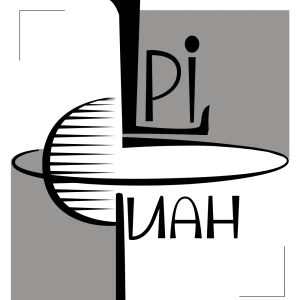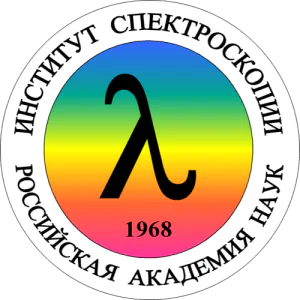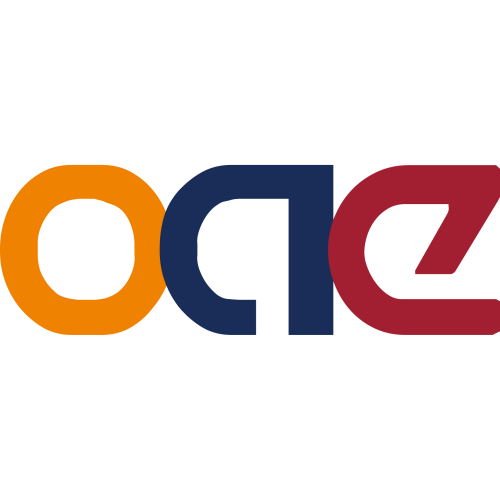Electronic Doping and Redox-Potential Tuning in Colloidal Semiconductor Nanocrystals
Publication type: Journal Article
Publication date: 2015-06-29
scimago Q1
wos Q1
SJR: 5.433
CiteScore: 30.7
Impact factor: 17.7
ISSN: 00014842, 15204898
PubMed ID:
26121552
General Chemistry
General Medicine
Abstract
Electronic doping is one of the most important experimental capabilities in all of semiconductor research and technology. Through electronic doping, insulating materials can be made conductive, opening doors to the formation of p-n junctions and other workhorses of modern semiconductor electronics. Recent interest in exploiting the unique physical and photophysical properties of colloidal semiconductor nanocrystals for revolutionary new device technologies has stimulated efforts to prepare electronically doped colloidal semiconductor nanocrystals with the same control as available in the corresponding bulk materials. Despite the impact that success in this endeavor would have, the development of general and reliable methods for electronic doping of colloidal semiconductor nanocrystals remains a long-standing challenge. In this Account, we review recent progress in the development and characterization of electronically doped colloidal semiconductor nanocrystals. Several successful methods for introducing excess band-like charge carriers are illustrated and discussed, including photodoping, outer-sphere electron transfer, defect doping, and electrochemical oxidation or reduction. A distinction is made between methods that yield excess band-like carriers at thermal equilibrium and those that inject excess charge carriers under thermal nonequilibrium conditions (steady state). Spectroscopic signatures of such excess carriers, accessible by both equilibrium and nonequilibrium methods, are reviewed and illustrated. A distinction is also proposed between the phenomena of electronic doping and redox-potential shifting. Electronically doped semiconductor nanocrystals possess excess band-like charge carriers at thermal equilibrium, whereas redox-potential shifting affects the potentials at which charge carriers are injected under nonequilibrium conditions, without necessarily introducing band-like charge carriers at equilibrium. Detection of the key spectroscopic signatures of band-like carriers allows distinction between these two regimes. Both electronic doping and redox-potential shifting can be powerful tools for tuning the performance of nanocrystals in electronic devices. Finally, key chemical challenges associated with nanocrystal electronic doping are briefly discussed. These challenges are centered largely on the availability of charge-carrier reservoirs with suitable redox potentials and on the relatively poor control over nanocrystal surface traps. In most cases, the Fermi levels of colloidal nanocrystals are defined by the redox properties of their surface traps. Control over nanocrystal surface chemistries is therefore essential to the development of general and reliable strategies for electronically doping colloidal semiconductor nanocrystals. Overall, recent progress in this area portends exciting future advances in controlling nanocrystal compositions, surface chemistries, redox potentials, and charge states to yield new classes of electronic nanomaterials with attractive physical properties and the potential to stimulate unprecedented new semiconductor technologies.
Found
Nothing found, try to update filter.
Found
Nothing found, try to update filter.
Top-30
Journals
|
2
4
6
8
10
12
14
|
|
|
Chemistry of Materials
14 publications, 9.86%
|
|
|
Journal of Physical Chemistry C
13 publications, 9.15%
|
|
|
Journal of the American Chemical Society
11 publications, 7.75%
|
|
|
Nano Letters
11 publications, 7.75%
|
|
|
ACS Nano
10 publications, 7.04%
|
|
|
ACS applied materials & interfaces
6 publications, 4.23%
|
|
|
Chemical Reviews
5 publications, 3.52%
|
|
|
Nature Communications
3 publications, 2.11%
|
|
|
Advanced Materials
3 publications, 2.11%
|
|
|
ACS Photonics
3 publications, 2.11%
|
|
|
Chemical Society Reviews
3 publications, 2.11%
|
|
|
Journal of Materials Chemistry A
3 publications, 2.11%
|
|
|
Applied Physics Letters
2 publications, 1.41%
|
|
|
Journal of Chemical Physics
2 publications, 1.41%
|
|
|
Scientific Reports
2 publications, 1.41%
|
|
|
Advanced Functional Materials
2 publications, 1.41%
|
|
|
Advanced Energy Materials
2 publications, 1.41%
|
|
|
Nanoscale
2 publications, 1.41%
|
|
|
Catalysis Science and Technology
2 publications, 1.41%
|
|
|
Chemical Communications
2 publications, 1.41%
|
|
|
Advanced Optical Materials
2 publications, 1.41%
|
|
|
Applied Physics Reviews
1 publication, 0.7%
|
|
|
Physical Review B
1 publication, 0.7%
|
|
|
Nanomaterials
1 publication, 0.7%
|
|
|
Topics in Current Chemistry
1 publication, 0.7%
|
|
|
Nature Materials
1 publication, 0.7%
|
|
|
Journal of Photochemistry and Photobiology C: Photochemistry Reviews
1 publication, 0.7%
|
|
|
ACS Nanoscience Au
1 publication, 0.7%
|
|
|
Physics Reports
1 publication, 0.7%
|
|
|
ChemPhysChem
1 publication, 0.7%
|
|
|
2
4
6
8
10
12
14
|
Publishers
|
10
20
30
40
50
60
70
80
|
|
|
American Chemical Society (ACS)
78 publications, 54.93%
|
|
|
Royal Society of Chemistry (RSC)
18 publications, 12.68%
|
|
|
Wiley
16 publications, 11.27%
|
|
|
Springer Nature
8 publications, 5.63%
|
|
|
Elsevier
6 publications, 4.23%
|
|
|
AIP Publishing
5 publications, 3.52%
|
|
|
American Physical Society (APS)
1 publication, 0.7%
|
|
|
MDPI
1 publication, 0.7%
|
|
|
Institute of Electrical and Electronics Engineers (IEEE)
1 publication, 0.7%
|
|
|
American Association for the Advancement of Science (AAAS)
1 publication, 0.7%
|
|
|
Annual Reviews
1 publication, 0.7%
|
|
|
IOP Publishing
1 publication, 0.7%
|
|
|
Autonomous Non-profit Organization Editorial Board of the journal Uspekhi Khimii
1 publication, 0.7%
|
|
|
OAE Publishing Inc.
1 publication, 0.7%
|
|
|
Bentham Science Publishers Ltd.
1 publication, 0.7%
|
|
|
Oxford University Press
1 publication, 0.7%
|
|
|
10
20
30
40
50
60
70
80
|
- We do not take into account publications without a DOI.
- Statistics recalculated weekly.
Are you a researcher?
Create a profile to get free access to personal recommendations for colleagues and new articles.
Metrics
142
Total citations:
142
Citations from 2024:
30
(21.12%)
Cite this
GOST |
RIS |
BibTex |
MLA
Cite this
GOST
Copy
Schimpf A. M. et al. Electronic Doping and Redox-Potential Tuning in Colloidal Semiconductor Nanocrystals // Accounts of Chemical Research. 2015. Vol. 48. No. 7. pp. 1929-1937.
GOST all authors (up to 50)
Copy
Schimpf A. M., Knowles K. E., Carroll M., Gamelin D. R. Electronic Doping and Redox-Potential Tuning in Colloidal Semiconductor Nanocrystals // Accounts of Chemical Research. 2015. Vol. 48. No. 7. pp. 1929-1937.
Cite this
RIS
Copy
TY - JOUR
DO - 10.1021/acs.accounts.5b00181
UR - https://doi.org/10.1021/acs.accounts.5b00181
TI - Electronic Doping and Redox-Potential Tuning in Colloidal Semiconductor Nanocrystals
T2 - Accounts of Chemical Research
AU - Schimpf, Alina M
AU - Knowles, Kathryn E
AU - Carroll, Mike
AU - Gamelin, D. R.
PY - 2015
DA - 2015/06/29
PB - American Chemical Society (ACS)
SP - 1929-1937
IS - 7
VL - 48
PMID - 26121552
SN - 0001-4842
SN - 1520-4898
ER -
Cite this
BibTex (up to 50 authors)
Copy
@article{2015_Schimpf,
author = {Alina M Schimpf and Kathryn E Knowles and Mike Carroll and D. R. Gamelin},
title = {Electronic Doping and Redox-Potential Tuning in Colloidal Semiconductor Nanocrystals},
journal = {Accounts of Chemical Research},
year = {2015},
volume = {48},
publisher = {American Chemical Society (ACS)},
month = {jun},
url = {https://doi.org/10.1021/acs.accounts.5b00181},
number = {7},
pages = {1929--1937},
doi = {10.1021/acs.accounts.5b00181}
}
Cite this
MLA
Copy
Schimpf, Alina M., et al. “Electronic Doping and Redox-Potential Tuning in Colloidal Semiconductor Nanocrystals.” Accounts of Chemical Research, vol. 48, no. 7, Jun. 2015, pp. 1929-1937. https://doi.org/10.1021/acs.accounts.5b00181.




















